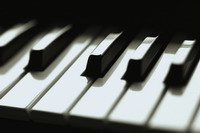Piano Sheets > Spencer Williams Sheet Music > Basin Street Blues (ver. 3) Piano Sheet
Basin Street Blues (ver. 3) by Spencer Williams - Piano Sheets and Free Sheet Music

About the Song
Other avaliable versions of this music sheet: Version 1 Version 2 Version 3
"Basin Street Blues" is a song often performed by Dixieland jazz bands, written by Spencer Williams. The song was published in 1926 and made famous in a recording by Louis Armstrong in 1928. The famous verse with the lyric "Won't you come along with me/To the Mississippi..." was later added by Glenn Miller and Jack Teagarden.
The Basin Street of the title refers to the main street of Storyville, the notorious red-light district of the early 20th-century New Orleans French Quarter. It became a red light district in approximately 1870.
Bob Wills and his Texas Playboys also recorded a version during the group's heyday with Tommy Duncan. Louis Prima also recorded the song on his 1957 album The Wildest! as did Dr. John on his 1992 album Goin' Back to New Orleans.
The "official" lyrics to the Bob Wills version don't contain the actual lyrics as heard on Bob Wills' Anthology. Instead of Basin Street.
Download this sheet!
About the Artist

Random article
Piano notes and music reading No language is easy to learn except for our mother tongue. Mother tongue is a language which we start learning as soon as we are conceived. But learning some other language can be difficult if you are really not into it. Piano Notes are written in a completely different language. Agreed that the characters in the piano notes are very artistic and beautiful but they are equally strange to beginners and newcomers. But here is one interesting fact. Learning music reading from a piano notes music sheet is not a very difficult task. Actually it is much easier than learning a foreign Asian language like Chinese. Memorization and repetition are the two main ingredients for success in mastering the language of piano notes. So realistically speaking, once you are done reading the basics, all you have to do is practice the language as much as you can. To say in a very classical tone, practice till each and every note starts running through your veins. (More...)
